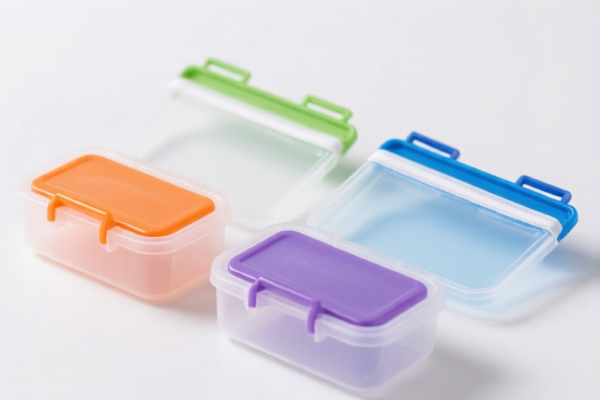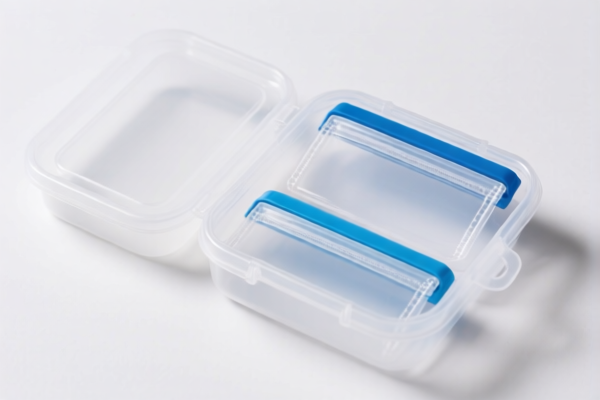Found 9 matching results
(CN → US)
| HS Code | Official Doc | Tariff Rate | Origin | Destination | Effective Date |
|---|---|---|---|---|---|
| 3923210011 | Doc | 58.0% | CN | US | 2025-05-12 |
| 3923210080 | Doc | 58.0% | CN | US | 2025-05-12 |
| 4202995000 | Doc | 62.8% | CN | US | 2025-05-12 |
| 4205008000 | Doc | 55.0% | CN | US | 2025-05-12 |
| 6305900000 | Doc | 43.7% | CN | US | 2025-05-12 |
| 6305390000 | Doc | 45.9% | CN | US | 2025-05-12 |
| 6307908945 | Doc | 37.0% | CN | US | 2025-05-12 |
| 6307908950 | Doc | 37.0% | CN | US | 2025-05-12 |
| 6114909070 | Doc | 35.6% | CN | US | 2025-05-12 |




Storage Bag
A storage bag is a flexible container, typically made of plastic film, used for containing and protecting items. They are widely employed for organization, preservation, and transportation of various goods.
Material:
- Polyethylene (PE): The most common material, offering good flexibility, low cost, and resistance to moisture. Commonly used for food storage, general household items, and disposable applications. Variations include Low-Density Polyethylene (LDPE) and High-Density Polyethylene (HDPE).
- Polypropylene (PP): More durable and heat-resistant than PE. Suitable for freezer storage, reusable applications, and items requiring a higher temperature tolerance.
- Polyvinyl Chloride (PVC): Less frequently used due to environmental concerns, but offers excellent clarity and strength.
- Laminated Films: Combinations of materials (e.g., PE/Aluminum Foil/PE) provide enhanced barrier properties against moisture, oxygen, and light, ideal for long-term food preservation or sensitive items.
- Cloth: Reusable storage bags are increasingly made from materials like cotton, canvas, or non-woven polypropylene.
Purpose:
- Organization: Storing small items, separating components, decluttering spaces.
- Preservation: Protecting food from freezer burn, preventing oxidation, maintaining freshness.
- Protection: Shielding items from dust, moisture, damage during transport or storage.
- Transportation: Carrying and moving items securely.
Function:
The primary function is containment. Specific functions vary based on the bag's material and design:
- Moisture Barrier: Prevents items from becoming damp or spoiled.
- Air Barrier: Reduces oxidation and preserves freshness.
- Light Barrier: Protects light-sensitive items.
- Strength & Durability: Withstands handling and prevents tearing.
- Resealability: Allows for repeated opening and closing.
Usage Scenarios:
- Food Storage: Freezing fruits, vegetables, meats, leftovers.
- Household Organization: Storing clothing, toys, craft supplies, toiletries.
- Travel: Packing toiletries, separating dirty clothes, protecting electronics.
- Gardening: Collecting seeds, storing soil, protecting plants.
- Commercial Applications: Packaging, shipping, industrial uses.
Common Types:
- Ziplock Bags: Feature a resealable zipper closure, widely used for food storage and general purpose applications. Available in various sizes and thicknesses.
- Trash Bags: Heavy-duty bags designed for waste disposal. Available in different sizes and strengths.
- Freezer Bags: Thicker, more durable bags specifically designed for long-term freezer storage.
- Food Storage Bags (without zipper): Typically tied or sealed with clips.
- Vacuum Storage Bags: Designed to remove air, maximizing storage space and preserving items for extended periods.
- Reusable Storage Bags: Made from cloth or durable plastic, offering an environmentally friendly alternative to disposable bags.
- Dry Bags: Waterproof bags used for protecting items during water activities.
- ESD Bags (Electrostatic Discharge Bags): Used for storing and transporting electronic components, protecting them from static electricity.
Based on the provided information, “storage bag” can potentially fall under several HS code classifications depending on the material and intended use. Here's a breakdown of relevant HS codes:
- 3923210011: Articles for the conveyance or packing of goods, of plastics; stoppers, lids, caps and other closures, of plastics: Sacks and bags (including cones): Of polymers of ethylene Reclosable, with integral extruded closure: With no single side exceeding 75 mm in length. This code applies to plastic sacks and bags made of polyethylene, specifically those that are reclosable and have a side length not exceeding 75mm. The total tax rate is 58.0% (Base tariff: 3.0%, Additional tariff: 25.0%, Post-April 2, 2025, additional tariff: 30.0%).
- 3923210080: Articles for the conveyance or packing of goods, of plastics; stoppers, lids, caps and other closures, of plastics: Sacks and bags (including cones): Of polymers of ethylene Other: With no single side exceeding 75 mm in length. This code also applies to plastic sacks and bags made of polyethylene, but covers those that are not reclosable or have different closure types, and with a side length not exceeding 75mm. The total tax rate is 58.0% (Base tariff: 3.0%, Additional tariff: 25.0%, Post-April 2, 2025, additional tariff: 30.0%).
- 6305900000: Sacks and bags, of a kind used for the packing of goods: Of other textile materials (899). This code applies to sacks and bags used for packing goods, made from other textile materials. The total tax rate is 43.7% (Base tariff: 6.2%, Additional tariff: 7.5%, Post-April 2, 2025, additional tariff: 30.0%).
- 6305390000: Sacks and bags, of a kind used for the packing of goods: Of man-made textile materials: Other (669). This code applies to sacks and bags used for packing goods, made from man-made textile materials. The total tax rate is 45.9% (Base tariff: 8.4%, Additional tariff: 7.5%, Post-April 2, 2025, additional tariff: 30.0%).
Important Considerations:
- The classification between 3923210011 and 3923210080 depends on whether the bag is reclosable with an integral extruded closure.
- If the storage bag is made of textile materials, the codes 6305900000 or 6305390000 may be applicable, depending on the specific textile material used.
- The tax rates are subject to change, particularly the additional tariff which will increase to 30.0% after April 2, 2025.
Customer Reviews
No reviews yet.